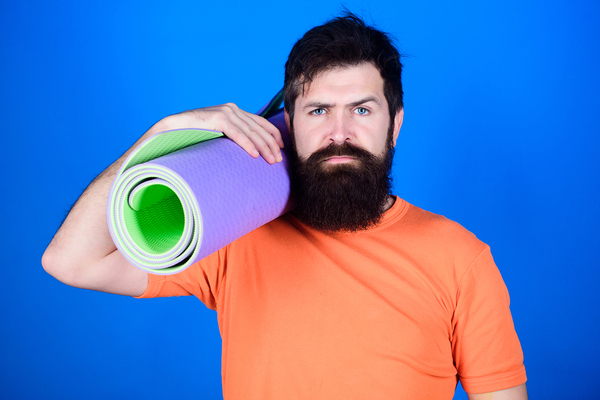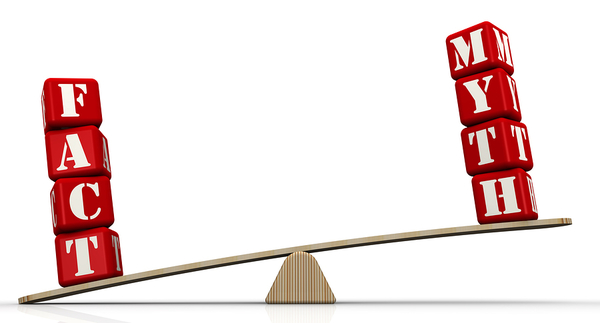Posts by Randall Holmes
3 Ways Chiropractic Treatment Saves You Money
Some folks out there might be reluctant to seek out chiropractic treatment, especially when feeling well or what is perceived to be well. But, the truth is, you might be living with health problems you’re not totally aware of and might live with pain and discomfort this is just minor enough to live with.
Sometimes we might be hesitant to see the chiropractor because we don’t want to spend our money, time, and resources, but, in the long run, chiropractic treatment can save you money.
Avoid Costly Injuries Down the Road
Chiropractic treatments increase your range of motion and boost brain function and mental focus. These benefits will help you avoid injuries down the road.
Drug-Free Pain Relief
Millions of Americans spend hundreds and even thousands of dollars annually on prescription medications that simply mask the symptoms of underlying health conditions. Chiropractic treatments not only aim to provide drug-free pain relief benefits but also aim to address underlying health conditions.
Contact Holmes Chiropractic for Budget-Friendly Chiropractic Treatment Today!
At Holmes Chiropractic we aim to provide chiropractic treatments that can fit just about any budget. Contact us today and we’ll do everything in our power to get you the treatment you need at a budget-friendly price.
Do I Need a Health Coach?
A health coach is someone who can help power you through your plateaus and ruts, motivating you to not only stay on top of your exercise routine but also stay on top of your nutrition and workout recovery routine.
A big part of health coaching is directing the client toward a life of continuous health and wellness, setting the foundation for a long, happy, healthy life.
Below are a few signs you might be in need of the services of an expert health coach in Houston, TX.
You’re Not Feeling Great
If you’re feeling anything but 100%, it’s a good idea considering enlisting the services of a health coach, which will help jumpstart your health and wellness plan.
You Have Lingering Pain
If you’re working out, you might be working through pain that can either come from injury or overuse. A health coach can help you learn how to manage pain, suggest active recovery protocols that incorporate yoga, even suggest treatments (like chiropractic care) that offer drug-free pain relief.
Your Plan Lacks Focus
Often, we can’t help but not know what is best for ourselves. Often, if left to our own devices, our workouts, nutrition, and mental wellness practices can come few and far between. With a health coach, you’ll be able to stay on a regimented plan that will get you better, faster results!
Contact Holmes Chiropractic today if you’d like to learn more about our health coach services. We have a long track record of getting and keeping our patients healthy, well, and in shape!
Why You Shouldn’t Wait to Get Chiropractic Treatment
Chiropractic treatment is more than just a viable option for those who experience back pain and injury. One common misconception about chiropractic adjustments is that they’re only for those who are injured, when, in fact, those who might think they’re perfectly healthy still stand to gain a tremendous amount of benefits from visiting the chiropractor.
Chiropractic to Avoid Injury
Chiropractic treatment can increase your range of motion and help your brain better communicate with the rest of your body, which will help you avoid injuries down the road.
Optimize Your GI System
Chiropractic adjustments can help the intricate systems of your body function more properly, including your gastrointestinal system. Your gut is linked to your mind, which is connected to your spine!
Loosens Tight Areas of the Body
When you do the work thing and the extracurricular thing, your body takes a lot of damage, which can often come in the form of tension in the muscles, joints, neck, and back. Chiropractic adjustments help loosen up the tightness of the body, improving your flexibility and range of motion.
If you have any questions about how chiropractic treatments can benefit you, contact Holmes Chiropractic today to schedule your consultation.
3 Healthy Habits to Implement into Your Life Today
Habits can be healthy and not so healthy, it turns out. The things we do habitually can either be propelling us forward toward our health, professional, and personal goals or they can be quietly (and in some cases not so quietly) sabotaging our efforts.
Below are a few positive habits to apply to your own daily routine that will pay off in dividends when it comes to your mental and physical wellness.
Start a Meditation Practice
It doesn’t matter if you’re able to sit in quiet and stillness for a half-hour or if you can only do it for 10 minutes, practicing letting your mind be silent and still is a fantastic thing to practice daily — many successful sports figures, artists, and even CEOs practice meditation on a daily basis. Try it first thing in the morning before you’ve had your coffee for best results.
Exercise Your Mind and Body
We need to exercise both our minds and our bodies to achieve peace within ourselves. Read a challenging book once a month and work on your cardio. Strengthen your core and make sure to never skip leg day. Listen to audiobooks on the drive to work instead of that same old playlist, try a new educational podcast. When we work out our minds and our bodies to proper exhaustion, we get better sleep and stay in a better mood.
Join a Community
Be a part of something to stay connected and accountable to a group of like-minded, goal-oriented folks. Take a yoga or a martial arts class, do volunteer work — whatever floats your boat!
Chiropractic treatments are also a great compliment to an active, healthy lifestyle. Contact Holmes Chiropractic today to schedule your consultation.
Neck Pain Causes and Treatment
Neck (and also back) pain can result from an injury due to an action or activity we are performing once, or it can be the result of something we’re doing every day. Below, Holmes Chiropractic goes over a few main contributors to neck pain and what you can do about it.
Texting/Too Much Screen Time
When we look at our phones we tend to hold them out in front of us, lowered so people can’t see what we’re doing, which means our necks are generally craned down in an awkward position. Too much time staring at a screen the wrong way can lead to neck and back pain.
Sleeping in the Wrong Position
Sleeping in the wrong position can leave your neck and back in pain, which can disrupt your entire day.
Workplace Injury
Sometimes our employers ask us to go above and beyond, and sometimes in those cases an injury can take place. Neck and back injuries are among the most common workplace injuries.
Treating neck pain can be tricky, but with the right protocol, you can recover and be back to 100% in no time. Chiropractic adjustments have been shown to be beneficial in treating back pain, neck pain, headaches, leg pain, joint pain, and more. Contact Holmes Chiropractic today to schedule your consultation.
Tips for Better Sleep
Peaceful, restful sleep can be more evasive to some as opposed to others. A high school teenager might get more sleep than, say, a new parent or someone suffering from insomnia. Even little aches and pains that we live with every day might be contributing to a less restful night of sleep.
The good news is there’s a lot you can do to set yourself up for a better night of sleep… on a nightly basis!
Exercise to Exhaustion
Stay committed to your fitness routine, whether it’s going on that run 3-5 times a week or making yourself go to Yoga and Muay Thai lessons, make sure that you’re spending the requisite amount of energy working your body to exhaustion. You’ll be surprised how much better you sleep!
Cut Caffeine
Going from 7 to 2 cups of coffee each day will help you achieve better sleep. Try to also cut off consuming caffeinated beverages past 3pm or 4pm to ensure the effects have worn off by the time you hit your bed.
Stretch it Out
Taking a yoga class and/or stretching each day and night will help your body feel more relaxed and reduce tension in your body. You’ll feel more comfortable when it’s time to get those Zs.
Chiropractic adjustments are also a great tool to use to help you achieve better sleep. Contact Holmes Chiropractic today to schedule your consultation.
Why You Need a Chiropractor in Your Life
Most people think of the chiropractor as someone who helps them get through a back injury, which is only partly true. Sure, Holmes Chiropractic is no stranger to helping our patients work through neck pain, back pain, and leg pain, not to mention joint problems, insomnia, and much, much more.
Below are a few key reasons why you should consider chiropractic treatment and why you should garner a closer relationship with your local chiropractor.
Drug-Free Pain Relief
Life hurts, plain and simple. Even seemingly innocuous activities like sitting in the car or sitting at your work desk put a tremendous amount of wear and wear on your spine. Those who live more active lifestyles have to contend with injuries and wear and tear, in which cases chiropractic treatments are particularly useful for drug-free, all-natural pain relief.
Optimize Your Body and Mind
Your spine is inextricably linked to your brain and helps your brain communicate with the rest of your body. These channels can experience blockages due to misalignment. Your local chiropractor has the power to recalibrate your body and mind, helping boost cognitive function, coordination, not to mention increase your range of motion.
It’s a Soothing Experience
Visiting your chiropractor is a wonderful experience where all the focus is put on you. We create a comfortable atmosphere where you will feel safe and taken care of. Contact Holmes Chiropractic today to schedule your consultation.
3 Ways to Make Your Off Days More Productive
When it comes to our days off, many of us like to make plans of doing nothing. For many of us, a day off entails sitting on the couch, indulging in comfort food, and streaming 6-12 episodes of our favorite television show.
The truth is, our off days present amazing opportunities to engage in relaxation while crossing a few things off the to-do list. Below are a few ways to make your off days a little more productive.
1.) Limit Your Screen Time
Many of us spend our workdays in front of the computer, so it’s a good idea to limit time on devices on the weekends to ensure you get done what you need to get done.
2.) Get Outside
Try to get out of the house and stay out of the car, which will help you get some fresh air and much-needed time outdoors.
3.) Set An Objective or Two
Setting weekend goals is a good idea to get a little extra done and distinguish yourself. Whether the goal is work-related or something personal, make sure you see it through.
Chiropractic treatments are also a great way to boost your productivity as chiropractic adjustments have been shown to help your body, brain, and your internal systems function in a more optimum capacity. Contact Holmes Chiropractic today to schedule your consultation.
Everyday Activities that Lead to Back Pain
Chances are, the things we do every day are the things that could potentially sideline us with an injury. Generally, when we’re performing a new task, we give it the proper attention and consideration it deserves. Plus, these new things we do each day are usually one-off activities or actions. Repetitive actions are what end up causing us the most wear and tear.
Below are a few everyday activities you might be engaging in which can lead to back problems.
Sitting with Improper Posture
Whether it’s at work, in the car, or in between, if you’re sitting with anything less than perfect posture, then you can end up causing anatomical changes to your spine which can affect your health in adverse ways.
Improper Lifting Technique
Again, whether it’s at work or at play, failing to practice proper lifting technique can sideline you with an injury. Instead, lift with your legs. Keep your feet shoulder-width apart and carry loads close to the body in order to save your spine.
Too Much Time in the Chair
We sit a lot, come to think of it. We sit at work, we sit in the car, and we sit on the couch and Netflix on our days off. Sitting for long periods of time causes discomfort and pain, not to mention puts pressure on your muscles and discs in your back and your neck. Instead, try to do as much of your work standing up as you can. Incorporate an hourly stretch routine to switch things up a bit.
If you experience back pain due to the activities mentioned above, contact Holmes Chiropractic today to schedule your consultation.
Myths About Chiropractic Treatment
In this day and age, there is plenty of misinformation that gets spread about a variety of subjects and chiropractic treatments are no exception. Bellow Holmes Chiropractic goes over a few of the myths about chiropractic treatments that might make a potential patient hesitant to pursue chiropractic as a viable treatment option.
Myth #1: Chiropractic is Only for Back Pain
Chiropractic treatments have been shown to be beneficial for a wide range of areas of the body, not to mention vital systems of the body (like the immune system, the GI system, and the central nervous system).
Myth #2: Chiropractors Aren’t As Educated as Traditional Physicians
Chiropractors go to school for at least 4 years in order to earn a Doctor of Chiropractic (D.C.) degree and have to go to 3-4 years of an undergraduate college program.
Myth #3: Chiropractic Adjustments Are Only For Those Who Are Injured
Although it’s true that chiropractic adjustments benefit those who experience injury, it’s equally true that chiropractic treatment can help you avoid injury and increase flexibility and range of motion, not to mention provide drug-free pain relief to common conditions that affect many patients daily.
Contact Holmes Chiropractic to learn more about how chiropractic treatments can benefit you.









